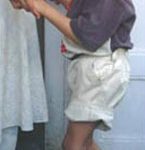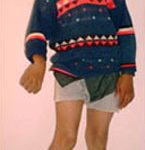Cerebral palsy (CP) is a group of neurological disorders that appear in early childhood and permanently affect body movement, muscle coordination, and balance. Different types of cerebral palsy present unique challenges and symptoms, ranging from mild motor skill impairments to more severe disabilities affecting the entire body.
Spastic Cerebral Palsy
Spastic cerebral palsy is the most common form of cerebral palsy, characterized by increased muscle tone, stiffness, and spasms. This form results from damage to the brain’s motor cortex or pyramidal tracts. Individuals with spastic cerebral palsy often experience exaggerated reflexes, making movements appear jerky or awkward. The increased muscle tone can affect various parts of the body, leading to difficulties with mobility and coordination.
Quadraplegic
Quadriplegic cerebral palsy, also known as tetraplegic cerebral palsy, affects all four limbs, the trunk, and facial muscles. This form of cerebral palsy results from significant brain injury or malformations that affect motor function across the entire body. Individuals with quadriplegic cerebral palsy often face severe challenges with movement, posture, and muscle control, and may also experience difficulties with speech, swallowing, and breathing due to muscle involvement in the face and neck.
Diplegia
Diplegic cerebral palsy primarily affects muscle control and movement in the legs, with the arms being less impacted. This form is often associated with premature birth and is characterized by muscle stiffness, spasticity, and poor coordination in the lower limbs. Individuals with diplegic cerebral palsy may have difficulty walking and maintaining balance, often requiring mobility aids such as walkers or crutches. Despite these challenges, upper body function is typically less affected, allowing for greater independence in daily activities.
Hemiplegic
Hemiplegic cerebral palsy affects one side of the body, either the right or left, typically due to brain damage on the opposite side. This form of cerebral palsy results in muscle weakness, spasticity, and impaired motor function on the affected side. Individuals with hemiplegic cerebral palsy may have difficulty with tasks that require coordinated use of both hands and may walk with a limp or favor one side. Early intervention and therapy can help improve function and mobility for those with hemiplegic cerebral palsy.
Dyskinetic
Dyskinetic cerebral palsy, also known as athetoid or dystonic cerebral palsy, is characterized by involuntary movements and fluctuating muscle tone. This form results from damage to the basal ganglia, which controls movement coordination. Individuals with dyskinetic cerebral palsy may experience twisting, repetitive movements, or slow, writhing motions, making it difficult to maintain posture and perform fine motor tasks. Speech and feeding can also be affected due to difficulties with muscle control in the face and tongue.
Ataxic
Ataxic cerebral palsy is the least common form and is marked by problems with balance, coordination, and depth perception. It results from damage to the cerebellum, the part of the brain that regulates voluntary movements. Individuals with ataxic cerebral palsy may have an unsteady gait, difficulty with precise movements, and a tendency to overshoot or undershoot when reaching for objects. Speech and eye movements can also be affected, leading to slurred speech and difficulty with tasks requiring fine motor skills.
Mixed
Mixed cerebral palsy refers to the presence of symptoms from more than one type of cerebral palsy, resulting from multiple areas of brain damage. The most common combination is spastic-dyskinetic cerebral palsy, where individuals experience both spasticity and involuntary movements. Symptoms and severity can vary widely, making individualized treatment and therapy crucial for managing the diverse challenges faced by those with mixed cerebral palsy. Comprehensive care often involves a combination of physical, occupational, and speech therapies to address the various aspects of the condition.
Frequently Asked Questions
What are the common treatments for different types of cerebral palsy?
Treatment varies based on the type and severity of CP but may include:
- Physical therapy to improve movement and strength.
- Occupational therapy to enhance daily living skills.
- Speech therapy for communication difficulties.
- Medications to manage symptoms like muscle spasticity.
- Surgery, in some cases, to correct physical abnormalities or improve function.
Can the type of cerebral palsy change over time?
The type of cerebral palsy diagnosed typically remains consistent, but symptoms can change as a child grows. Regular assessments and adjustments in treatment plans are essential to address evolving needs.
Is one type of cerebral palsy more severe than others?
Severity can vary widely within each type of cerebral palsy. For example, some individuals with spastic diplegia may walk with minor difficulty, while others with spastic quadriplegia may have significant impairments requiring extensive support.
Where can I find support and resources for managing cerebral palsy?
Treating the different types of cerebral palsy is often complex and requires the contribution of multiple specialties. At Children’s Cerebral Palsy, led by Dr. Siambanes, we have a group of interdisciplinary medical professionals dedicated to helping parents and caregivers find the right treatment plan for their child. Contact us to learn more and request a consultation.





